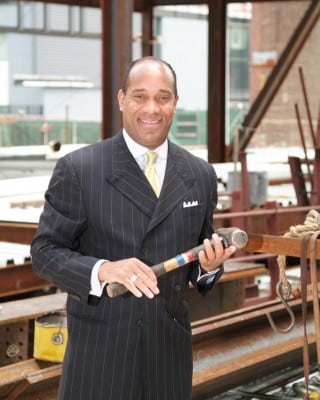With a five-year capital budget of $23 billion, the New York Metropolitan Transportation Authority (MTA) is the largest public transportation system in the United States. It also represents a diverse community—a fact that is driving the agency’s efforts to create opportunities for minority- and women-owned business enterprises (MWBEs).
White Americans of non-Hispanic origin make up 35.1 percent of New York City’s population, according to the 2006–2008 US Census. Hispanics and Latinos make up 27.5 percent; immigrant Africans, Caribbean immigrants, and African Americans 25.1 percent; and Asian Americans 11.8 percent, to name just a few of the many ethnic groups the city comprises.
Historically, the MTA didn’t do an effective job of contracting with MWBEs with respect to their procurement operations, but in 2009, there was an effort by former MTA executive director Lee Sander to do so. He created a new position, chief diversity officer, which would report directly to him, and began seeking candidates.

At the time, Michael J. Garner was working as senior director of business development at the NYC School Construction Authority (SCA), an agency charged with building and renovating public schools in New York City. The SCA had a $13 billion, five-year capital plan and was charged with building 106 new public schools and renovating countless others within the five-year capital plan. “We created a lot of innovative and aggressive programs that resulted in more than $6 billion in contracts being awarded to certified MWBEs, and when the call came in about the job at the MTA, the rest is history,” Garner says. “It presented an opportunity to work some magic at the regional level, because the MTA services 14 counties encompassing 5,000 square miles, from Suffolk to Orange County in upstate New York.
Garner began by increasing the MTA’s recruiting efforts in a wide array of sectors, from construction to professional services. However, he adopted a different approach from the one that had been utilized in the past. “Historically, government has failed in contracting with MWBEs because they’ve focused on outreach and certification efforts,” Garner says. “When you locate MWBEs and take them through an arduous MWBE certification process, if you haven’t eradicated the historical barriers to entry, they still can’t do business.”
The new paradigm in place at the MTA aims to first eradicate such barriers before recruiting firms for MWBE certification and procurement considerations. Several issues historically prevented MWBEs from contracting with the organization, notably that construction projects were not appropriately sized for smaller firms and that smaller firms had a lack of access to capital, surety bonding, and construction and business-development training. Garner and his team addressed these issues by partitioning larger projects into smaller segments and by paying contractors within 10 days—which Garner says is otherwise unheard of. “It’s like the old baseball movie, Field of Dreams: If you build it, they will come,” he says.
“If you haven’t eradicated the historical barriers to entry, MWBEs still can’t do business.”
And come they have. The first year Garner joined the MTA—fiscal year 2009–2010—MWBE projects made up 6.5 percent of the MTA’s total projects. However, the organization was under significant pressure to increase this number after New York state governor Andrew Cuomo mandated that every New York state agency and public authority was to award no less than 20 percent of its contracts to MWBEs by March 31, 2013. The MTA was able to exceed this benchmark, in part because the MTA’s diversity efforts are strongly supported by MTA chairman and CEO Tom Prendergast and the entire MTA board. Today, MWBEs fill 21.6 percent of MTA contracts, for a total value of $261 million.

